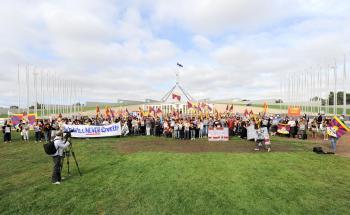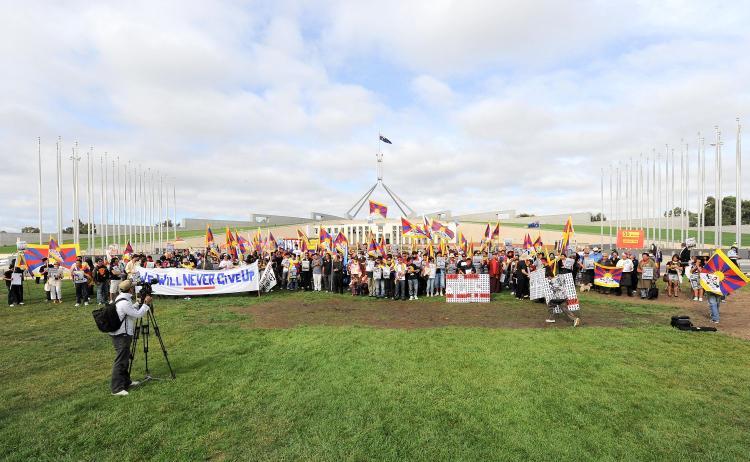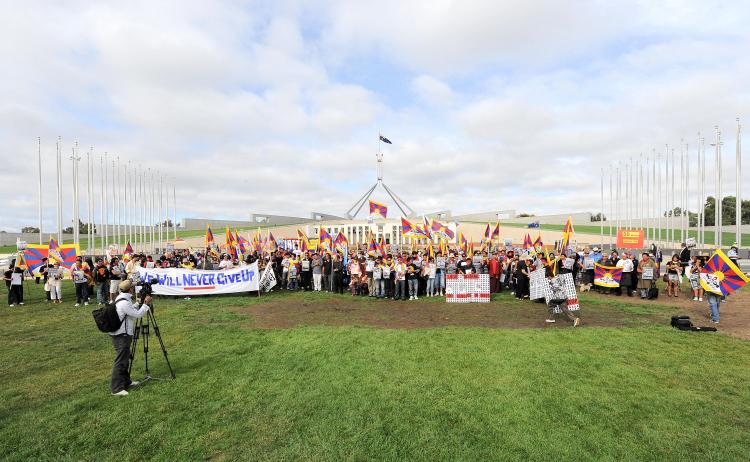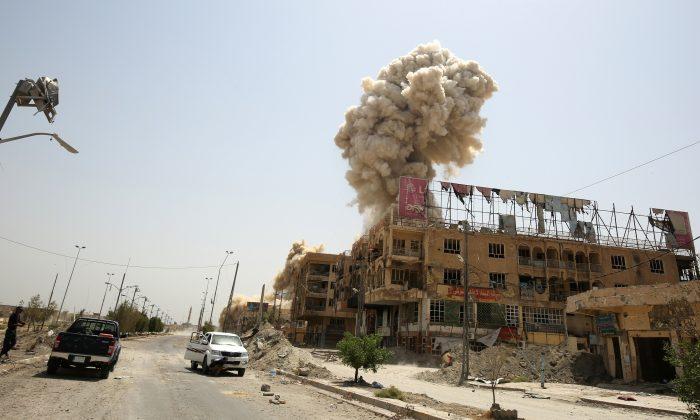Fifty years ago today, the autonomous region of China known as Tibet exploded in violence, as the Tibetan people tried to shake off the rule of the Chinese Communist Party (CCP). The Chinese People’s Liberation Army (PLA) rained artillery shells on the capital city of Lhasa, and the fourteenth Dalai Lama fled into the exile he has lived in ever since.
The Chinese regime had begun a program of forced “reform,” including the elimination of monastic and tribal leadership and the eradication of the Tibetan social system. People were beaten, tortured, murdered, and imprisoned. Ultimately there was a large exodus of the Tibetan people to Lhasa.
A popular uprising began on March 10, and other uprisings have happened again over the past five decades. Across China’s border with India, in Dharamsala, the exiled government continues to operate, with the Dalai Lama as its spiritual head.
The question of Tibet has never become a moot issue. Last year, events in Tibet caught the attention of international headlines when 300 monks tried to walk to the center of Lhasa. It was the largest march of its kind in over 20 years. Days of standoffs between local authorities and the people ensued. Tibets government in exile claims 200 were killed. Protests erupted worldwide. The PLA finally initiated 14 months of martial law.
Prior to the fiftieth anniversary of the events of 1959, a “strike hard” campaign was announced in an attempt to retain control. The CCP has rounded up thousands for questioning, and tried to cut off as much communication with the outside world as possible.
Part of the effect of the 1959 ousting of the Dalai Lama and the uprising of Tibetan people coming under attack was the creation of a Tibetan diaspora. On the fiftieth anniversary of this first uprising (others have followed since), residents of major cities might see Tibetans in front of Chinese consulates.
Information Control
The control of information is one of the main ways that the Chinese authorities try to shape the conversation about Tibet. If there are protests, like last year’s march of monks, and authorities kill people, the first step is to control the flow of information out of Tibet to the rest of the world. The March 10 anniversary this year is no exception. Video, photos, email, and cell phones have been monitored, or seized.
According to the international press freedom organization, Reporters Without Borders (RSF), in the past few days, the editor of a Tibetan website has been arrested, a Tibetan culture website has been closed and SMS services have been suspended in parts of Sichuan province.
“The crackdown launched after the events of March 2008 has never stopped,” said RSF in a statement. “The authorities have gone to great lengths to impose the official version of events, denying the existence of Tibetan victims.
“The statements full of hatred for Tibetans made by certain Chinese officials are unacceptable. The government keeps reiterating the need to maintain stability, but this translates into a relentless persecution of dissidents in Tibet.”
Media propaganda has also gotten worse preceding the anniversary. For example, the state-run Tibet Daily said in a Feb. 16 editorial that China was engaged in a “life-or-death class struggle” with the “Dalai Lama clique and hostile western forces.”
Seeking Autonomy
The Dalai Lama travels around the world extensively and speaks about the situation of his people and his intentions for Tibet. During an appearance in Warsaw, Poland in December he made comments in sharp contrast to China’s claims.
He stressed that he is not seeking independence for Tibet, but instead a “meaningful autonomy.”
“Only in that way can we protect our unique cultural heritage,” he said.
“[China] harms itself by acting not like a superpower but like a small country. It can actually get offended about a couple of press articles,” he said. “The free world has moral responsibility to bring China into the mainstream of world democracy. That is very essential, very important,” he said.
According to statements made by Steven Marshall, Senior Advisor and Prisoner Database Program Director for the U.S. Congressional Executive Commission on China (CECC) before the Senate Foreign Relations Committee in April last year, China’s policies toward Tibetans have been the root cause of the protests and riots.
Marshall said that there is no credible evidence to support Chinese government claims that the Dalai Lama (or “the Dalai clique”) manipulated Tibetans into protesting and rioting. Communist Party power over China’s legislative and regulatory process allows the government virtually unlimited ability to impose unpopular programs among Tibetans. The function and legitimacy of Tibetan Buddhism has been especially hard-hit since 2005.
“Weak implementation of the Regional Ethnic Autonomy Law is a principal factor preventing Tibetans from protecting their culture, language, and religion,” said Marshall to the Committee. “The Chinese leadership’s refusal to recognize the role of Chinese policy in driving Tibetan discontent, and their insistence on blaming the Dalai Lama, puts the leadership in an increasingly risky position.”
‘Strike Hard’
According to The Tibetan Centre for Human Rights and Democracy: “In the latest move to tighten its grip on the Tibetan people in Tibet and intensify its hard-line policies prior to any major events, the Chinese authorities’ in Lhasa launched a stipulated 42-day winter ‘Strike Hard’ Campaign beginning 18 January 2009.”
According to information given in the official newspaper, Lhasa Evening News (Ch: Lasa Wen Bao) today, “Within three days of the launch of Winter “Strike Hard” Campaign beginning 18 January 2009, Lhasa City Public Security Bureau (PSB) office had deployed 600 officers, around 160 police vehicles and conducted raids on 7 housing blocks, 2922 rented houses, 14 guest house and hotels, 18 bars and 3 internet cafés in Lhasa.
After conducting the raid on these locations, the PSB were able to round up 5766 suspects and questioned them. This figure highlights the result of the launch of the “Strike Hard” campaign in Lhasa since it was launched three days ago.” The official report did not mention about the number of people detained or released following the raid.







Friends Read Free